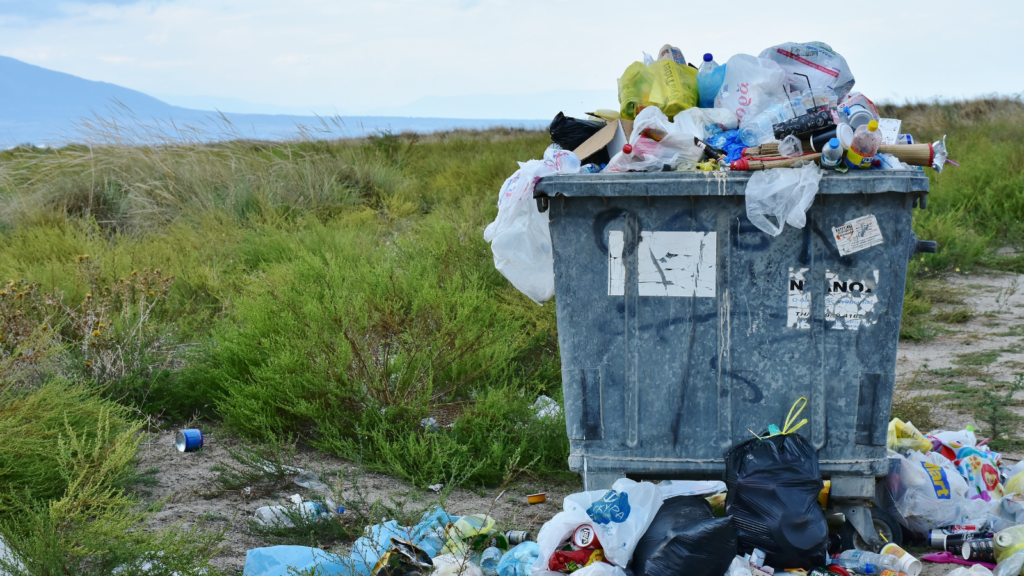
Alongside mounds of discarded water sachets in Senegal’s capital, Dakar, a well-known sight emerges from the street. It resembles a tall tower of trash, but this one is on the move. It is ‘Plastic Man’: dressed in waste from head to toe, wearing single-use bags, cups, and water sachets. His life mission is to warn about the dangers of plastic pollution.
Modou Fall, a father of four, was raised in the suburbs of Dakar. He began his career as a soldier. “I learned a lot of things when I was stationed on the Senegalese-Malian border,” says Fall. “I was observing migratory birds that no longer fly, surrounded by plastic waste.” It was then that Fall realized the scale of the crisis in his country. He decided to make the threat impossible to ignore by wearing plastic waste.
Water sachets are one of the most iconic single-use products in West Africa. These heat-sealed, water-filled, thin polyethylene bags have become prevalent in recent decades. Fall is doing his best to spread his anti-pollution message every day but experts say solving this crisis requires a global approach.
“Understanding the story behind water sachets is a good example to help understand the different facets of the global plastic pollution crisis,” says Elisa Tonda, Chief of the Resources and Markets Branch at the United Nations Environment Programme (UNEP). “Local needs and contexts must be considered when applying solutions to break away from a throwaway culture and effectively shift to a circular economy.”
Why are water sachets popular?
Using a water sachet is a daily practice for many low- and middle-income communities across West Africa. The widespread use is largely driven by the intermittent scarcity of public water supply: most people in sub-Saharan Africa’s cities find it hard to access basic water services. The low price, lightweight, and durability of water sachets add to their benefits; carrying a small plastic bag is easier than carrying a fragile traditional pottery jar or a bulky jerrycan.
“Plastic water sachets address a real need for potable water,” explains Tonda. “Making safe water more widespread, especially in lower-income communities, would help address the root cause of the problem rather than its symptoms. We need a reverse cultural shift back to using reusable bottles and cups.”
How does the industry operate?
Through the 1980s, it was common to sip water from a metal or plastic cup in Ghana’s streets, scooped out of a larger storage vessel. Then increased demand, coupled with sanitary concerns, led to new water packaging. The modern sachet appeared first in the late 1990s due to the advent of new machinery.
All one needs to create a small water sachet packaging business is access to tap water and a refrigerator. Some water sachets are produced and sold this way without indicating their origin or quality. Others are manufactured under major brands—in Senegal, these include Si Belle or Teranga—and are subject to regulation.
Threats to health and the environment
It is not uncommon for consumers to drop empty water sachets on the side of the road. But discarded plastic waste can block drains and cause air pollution when burned, as well as provide breeding grounds for disease vectors such as mosquitoes. Around 19 to 23 million tonnes of plastic leak into aquatic ecosystems annually, harming more than 800 species.
In Nigeria, sachets have become increasingly widespread, especially in fast-growing cities like Lagos. Research shows about 50-60 million used water sachets are thrown into the streets daily.
Government and advocacy actions
The supply of fresh, potable water on demand would be a sustainable solution for human health and the environment. But with Africa’s population expected to grow from 471 million in 2020 to 1 billion by 2050 and with insufficient water infrastructure in many cities, new policies and alternatives are needed.
30 African countries have agreed under the Bamako Convention to strengthen the management of hazardous waste, including plastics. Many have already imposed national bans on plastics, including water sachets. At the last session of the African Ministerial Conference on the Environment in Dakar, environment ministers committed to supporting the development of an international legally binding instrument on plastic pollution.
Much of this progress is credited to grassroots initiatives, like that of Plastic Man, calling on governments to do more.
In 2015, President Macky Sall awarded Plastic Man the National Order of Merit, giving him the opportunity to engage different ministers of the environment. “That did not stop the war waged by merchants and plastic producers against me,” says Fall. “But God gave me the courage to continue with my work,” he adds. Fall, now 54 years old, is still fighting for a clean Senegal, as the name of the NGO he founded suggests. He believes that vision requires much tighter cross-border coordination.
Some viable reuse options, such as automatic water dispensers in Dakar, are gradually emerging. But there is a need to further diversify alternatives and address the scarcity of widespread public water supply.
A key international mechanism
Over 160 countries participated in the first round of negotiations towards an internationally legally binding instrument on plastic pollution last year in Uruguay, and the second negotiating meeting starts next week in Paris. UNEP research shows that turning the tap off plastic pollution will require a systemic and global shift.
“We need all stakeholders engaged in the plastic treaty process to drive transformative change—governments, informal and private sectors, Indigenous Peoples, local communities, civil society, academia, and youth,” says Tonda. “We have an opportunity to change the course of history and create a plastic pollution-free planet for future generations.”
The original post was published by UNEP


